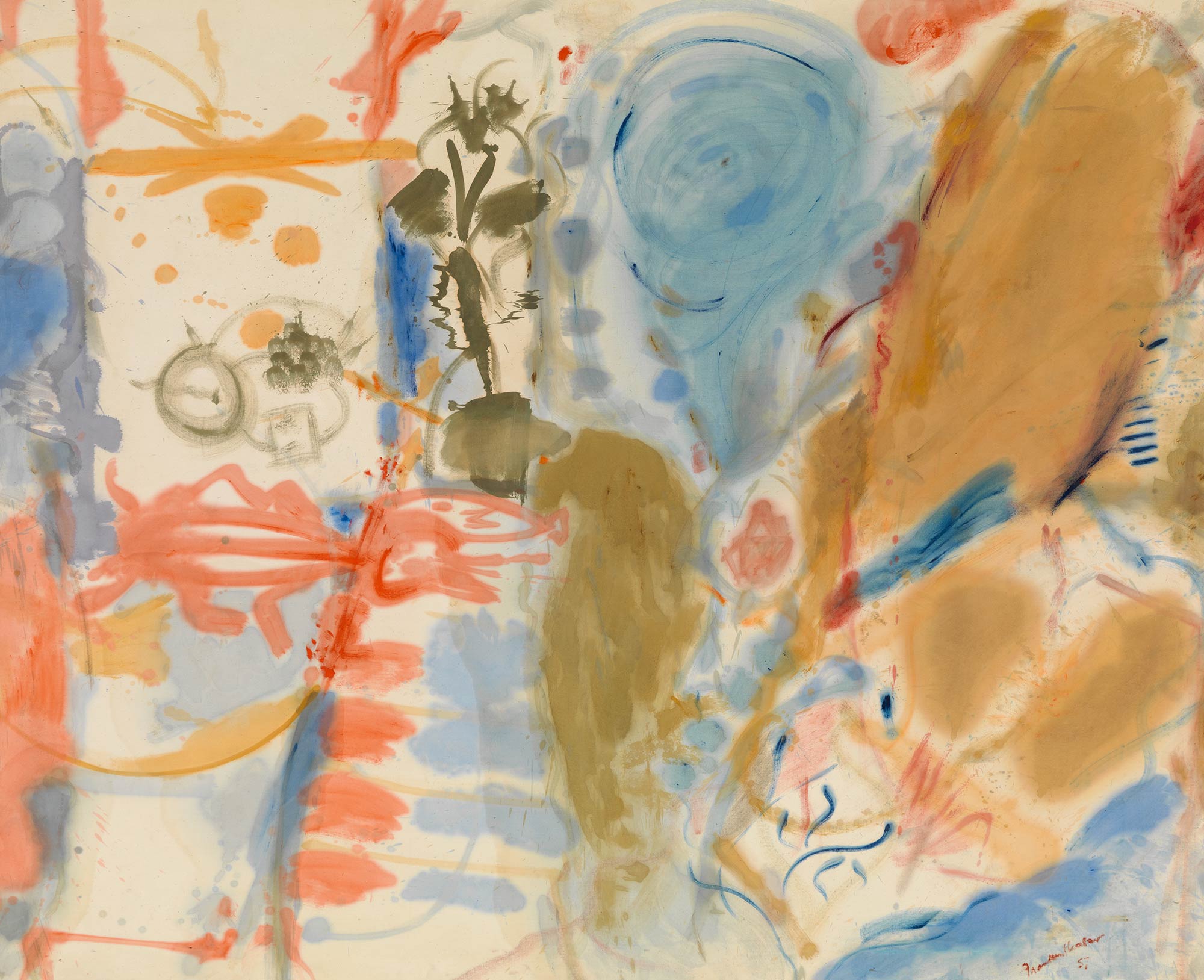Making Her Mark: 1950s
Helen Frankenthaler was living a bohemian life in downtown New York City during the early 1950s when she saw Jackson Pollock’s paintings at the Betty Parsons Gallery. Pollock’s gestural abstractions had a profound impact on the young painter. Transitioning from a traditional easel, Pollock maneuvered around monumental lengths of canvas rolled out on his studio floor. As abstract as some of his paintings appear, telltale images emerge. The suggestion of subliminal imagery intrigued Frankenthaler, who responded to Pollock’s radical methods: the choreography of an improvised full-bodied gesture and the possibility that abstract painting could carry some kind of message.
Abstraction primed by spontaneous drawing suited Frankenthaler’s artistic temperament as a means of projecting her imagination—as pictorial signs, symbols, and scenes—without revealing herself entirely. Ambiguity was essential. She wanted her images to remain mysterious, like poems; to mean different things to different people. Pollock enabled her to see painting as an open-ended process synonymous with drawing. The uninhibited mindset of one who draws was the catalyst for her breakout Mountains and Sea (1952), and for many of the paintings in this exhibition, including the earliest works in this section, all of which signal a precocious, prodigious talent.


